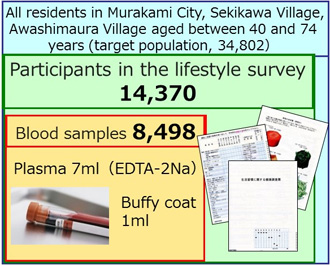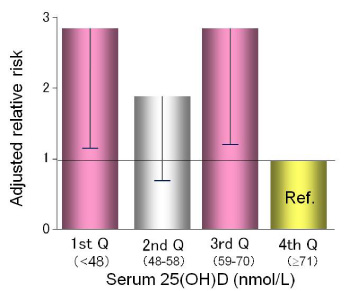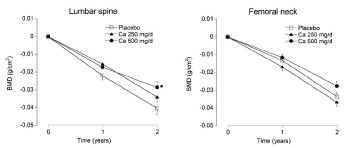1.Research Summary
In the field of preventive medicine, we conduct epidemiologic studies aimed at prevention of age-related and lifestyle-related diseases including musculoskeletal disorders, dementia, etc., taking environmental and genetic factors into consideration. Our studies include prospective epidemiologic investigations of residents in Murakami, Sekikawa and Awashima districts in Niigata Prefecture (The Murakami Cohort Study).
2.Research Groups
3-1.Prevention of age-related disease Group
Research subjects
Prevention of osteoporosis and fractures due to falls
Prevention of dementia
Preventive effects of vitamin D and calcium on diseases
Prevention of decreased physical function in elderly people
3-2.Omics study on dementia Group
Research subjects
Proteomics study using urine of dementia patients
Omics study on dementia
3-3.Other Groups
Molecular epidemiology of gallbladder cancer
Epidemiologic studies on mental health
Environmental epidemiology
4.Research Results
[Area] Preventive Medicine
[Research subject]
Murakami cohort study
[Description]
We set up a large scale cohort study on age-related diseases, including
osteoporotic fractures, osteoarthritis, and dementia. We targeted all people
aged between 40 and 74 years, resided in Murakami City, Sekikawa Village,
and Awashimaura Village in Niigata Prefecture. As a baseline investigation,
14,370people participated in the lifestyles questionnaire survey, and 8,498
people provided a blood sample. We have successfully set up the cohort
study, and started follow-up.
http://www.med.niigata-u.ac.jp/hyg/murakami/index.html
[Photographs]

[Area] Preventive Medicine
[Research subject]
Prevention of osteoporosis
[Description]
To determine the effect of vitamin D on the prevention of osteoporosis,
we conducted a 6-year cohort study in Muramatsu, Gosen City. The subjects
were 775 women 70 years of age or older. We measured blood 25-hydroxyvitamin
D (25 [OH] D) levels at baseline. We divided subjects based on the levels
of blood 25 (OH) D into four groups. We found that the fracture risk in
the highest 25 (OH) D level (≥71 nmol/L) group was significantly
reduced. This result suggests that vitamin D treatment is effective for
preventing fractures due to accidental falls.
(Osteoporos Int 2012)
[Photographs]

[Area] Preventive Medicine
[Research subject]
Preventive effects of vitamin D and calcium on diseases
[Description]
To determine the effects of calcium (Ca) supplements on the prevention
of bone mineral density loss in postmenopausal women, we conducted a 2-year
randomized control study. A total of 450 subjects were randomly assigned
to 1) supplementation with Ca 250 mg/day, 2) supplementation with Ca 500
mg/day, or 3) placebo. Intention-to-treat analysis was performed and supplementation
with Ca 500 mg/day was shown to suppress lumbar bone mineral density loss,
but did not show a definite effect on the bone density of femoral necks.
These results suggest that appropriate supplementation with Ca may be effective
for the prevention of osteoporosis in the lumbar spines of postmenopausal
women.
(J Bone Miner Res 2012)
[Photographs]

Intention-to-treat analysis of changes (follow-up minus baseline examination alues) in bone mineral density (BMD) of the lumbar spine (left) and femoral neck (right) for the three calcium supplement treatment groups. Bars indicate standard errors. An asterisk (*) indicates a statistically significant difference (P<0.05) in mean BMD changes for calcium supplement groups compared to the placebo group, tested by one-factor repeated measures ANOVA with Dunnett's multiple comparison.
Please see the Preventive Medicine website for a detailed description of our research.
